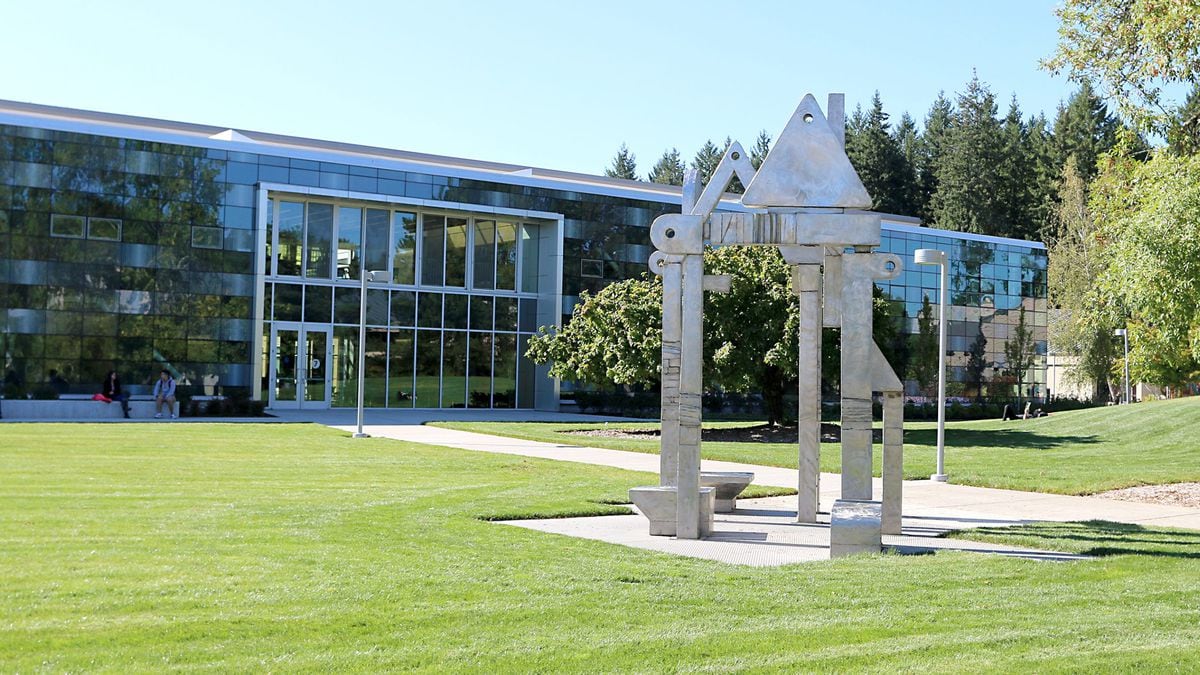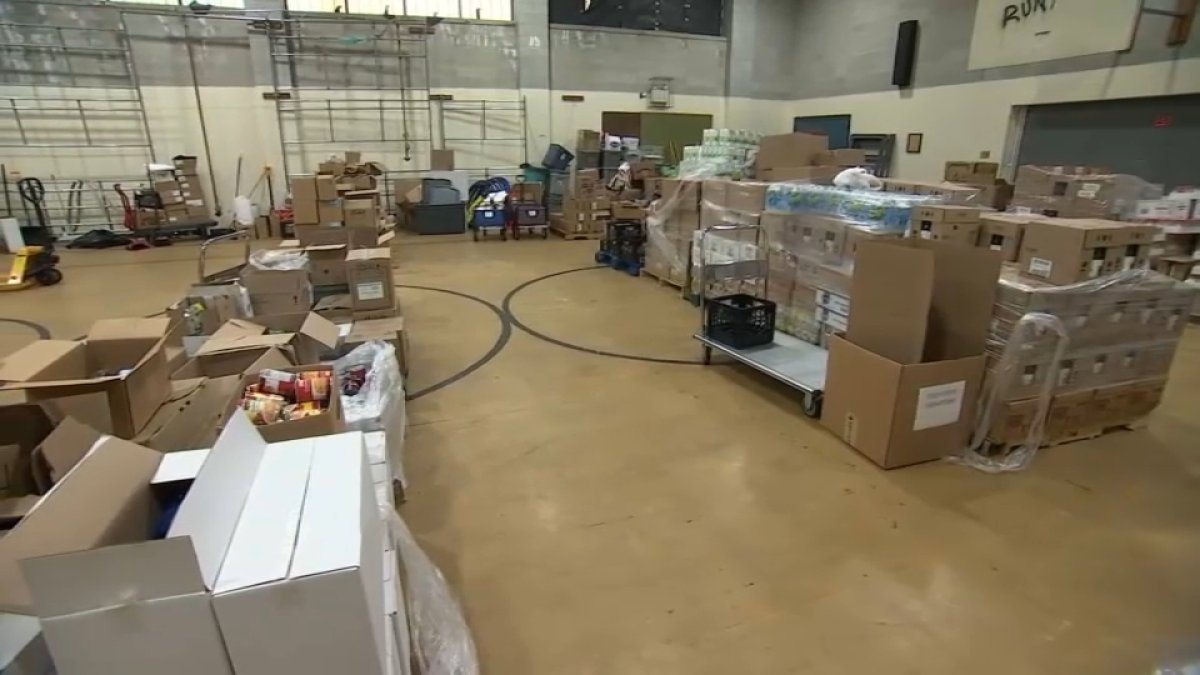
Patients nationwide are backing up in emergency rooms waiting for beds that sit unused because of persistent staffing shortages. But it is difficult, even in this data-driven world, for the public to understand just how serious the problem is in San Diego County.
The state requires every medical center to submit and publish their average number of staffed and available beds four times per year, but, examining the most recent disclosures covering April through June shows sometimes shockingly low ratios of staffed to available beds. Most are in the range of 60 percent to 70 percent though some dip much lower.
Hospitals, though, immediately cry foul, pointing out caveats that they say make such simple calculations inaccurate. The inclusion of surge beds that are available but not staffed unless needed, they argue, can skew the picture as can double-occupancy hospital rooms where one of two beds might not be able to be used.
There is, however, a growing chorus of complaints from front-line workers, generally speaking through their union representatives, that indicates the state’s nursing ratios, which specify maximum numbers of patients in specific departments, are often being broken under the strain of too few workers and too many patients.
Peter Sidhu, a Kaiser nurse and treasurer for United Nurses Associations of California, said this week that he has been receiving a steady stream of assignment objection forms from nurses in San Diego’s two Kaiser hospitals indicating that nurses are being assigned more patients than the state’s nursing ratios allow.

RN Nicole Brunner, left, and respiratory therapist Amanda Navarro wheel a COVID-19 positive patient from the emergency room to the ICU at Scripps Memorial Hospital La Jolla on Monday, Jan. 3, 2021.
(K.C. Alfred / The San Diego Union-Tribune)
“I think no one’s following ratios right now,” Sidhu said.
If a unit specifies, for example, no more than five patients per nurse, he said, charge nurses, who are supposed to assigned to serve as a resource for the nurses they supervise are often being assigned patients.
“Half the time they’re taking patients, and if they can’t take them, they tell you to divvy them up,” Sidhu said.
Andrea Muir, union president and registered nurse for Sharp HealthCare, said she too has seen an increase in assignment objections due to patient assignments exceeding ratios.
“I’m seeing nurses, you know, reporting that they’re out of ratio at some of the Sharp facilities because they don’t literally have enough staff,” Muir said.
Christina Hart, a registered nurse and union member at Tri-City Medical Center in Oceanside, said she has heard that night-time staffing has sometimes been low enough to break ratios that specify no more than four patients per nurse.
“I have seen where there are night shifts where they’re required to take as many as six patients,” Hart said. “That definitely is out of ratio.”
Hospitals had varying reactions to ratio reports.
In a statement, Kaiser said it has hired 339 additional nurses in San Diego since June, part of a hiring blitz that has included 2,700 nurses across Southern California. The health care giant insisted that it is keeping up with state requirements.
“Kaiser Permanente San Diego hospitals are fully staffed under state nursing ratios,” Kaiser said.
Tri-City, in its own statement, acknowledged that its operations have occasionally slipped out of ratio.
“Like other hospitals, we staff to volume, typically based on historical trends and projections. Occasionally, the demand for services exceeds those projections and/or staff sick calls and other call-offs reduce our supply of available nurses,” the statement said. “In those instances, we have experienced transient episodes where state ratios are not met in specific units.
“When that occurs, we employ a number of tactics to bring the unit back in compliance.”
But Hart said she and her colleagues feel that the public hospital district is not always proactive about bringing in part time “per diem” nurses when shortages can be predicted early.
Sharp, in a written statement, said it has “not received any staffing objection forms due to being out-of-ratio,” and would report such an occurrence to the state.

Cory Litzau, ER tech, Traypaniel Jordan, RN and Stephen Forrester, RN (left to right) discuss the vitals of a patient who was brought in by ambulance to the ER in the emergency room at Sharp Grossmont Hospital on Thursday, Aug. 12, 2021.
(Nelvin C. Cepeda/The San Diego Union-Tribune)
“We have not reached a threshold to report,” Sharp’s statement said.
The California Department of Public Health, designated to enforce ratios statewide, said in an email that it does investigate complaints of ratio violations, checking to see “prompt efforts were made to maintain required staffing levels.”
If inadequate evidence exists, “the facility may be cited for deficient practices.”
A new state law that took effect on Jan. 1, 2020, requires CDPH to issue penalties of $15,000 to $30,000 for unwarranted ratio violations, but the department’s list of administrative penalties, updated on Dec. 5, lists none specifically for ratios.
The governor’s coronavirus pandemic emergency declaration, which is still in effect until early next year, allows hospitals to request temporary exemptions to nursing ratios in emergency situations, but the CDPH said none are currently active.
The question is, does violating nursing ratios equate to an erosion in the quality of patient care?

Taylyn Dyok, an RN in the emergency room at Sharp Memorial Hospital, updates her patients medical records on Tuesday, Jan. 18, 2022 in San Diego, CA.
(Nelvin C. Cepeda / The San Diego Union-Tribune)
California, after all, is the only state in the nation with such ratios, which unions were instrumental in supporting and which took effect in 2004.
Kathryn Phillips, an associate director of the improving access team at the California Healthcare Foundation, said that while there might be some debate over the benefits of having ratios versus not having them, the overall benefit of fewer patients per nurse is well understood.
“There is strong evidence that when nurses are overloaded with patients, safety problems occur, both for patients and nurses at risk of injuries,” Phillips said.
Whether or not there has been a major increase in patient harm as a result of staffing deficiencies remains an open question. State and nationwide data on medical complications has only been released by regulatory agencies through 2020, and the CDPH, on its hospital complaint website, notes that while its information systems indicate there have been a decreasing number of complaints about poor care “due to suspension of routine inspections and visitation restrictions imposed during the COVID-19 pandemic,” its data “may not reflect actual conditions in facilities.”
Joanne Spetz, director of the Philip R. Lee Institute for Health Policy Studies at UC San Francisco, confirmed in an email Friday that, indeed, the time lag involved in publishing medical quality information, taken together with the difficulties brought about by the pandemic, make understanding the true impact of the current staffing shortages difficult to discern.
“There are reasons to worry that even stable staffing levels would not be adequate, because of the increasing complexity of patients who have delayed care during the pandemic, ongoing high acuity of COVID-19 patients and more severe respiratory disease, and rising social issues such as increasing rates of opioid and methamphetamine misuse, housing insecurity, and food insecurity,” Spetz said in an email. “I won’t be surprised if we see worse patient outcomes in 2021, but it will be hard to determine how much of that is due to staff shortage versus all the other challenges of that year.”
Pay not only factor
Ratio wrangling aside, it is obvious that hospitals need to find ways to entice nurses to work more or perhaps return to the profession if they are to make it through the current staffing crisis.
But there are increasing signs that traditional ways of handling such shortfalls has become less effective, even as questions about the effects of low staffing on patient care are a growing concern.
Sidhu, the United Nurses representative for Kaiser, said that a meeting between labor leaders and Kaiser executives Wednesday proposed incentive payments for nurses to work more hours during the current shortage — $450 extra per day shift and $700 at night.
Arriving during the holidays, cash is usually a motivator to get people to work more than they otherwise would. But Sidhu said he was astounded to learn that worker representatives rejected that proposal.
“They were like, ‘we’re just tired of it all, we’re burned out, you can’t buy us,’” Sidhu said. “They all voted to end their incentive agreements, and this is during Christmas where we’ve typically seen people want to work more shifts.”

Jennifer Le, an RN Clinical Lead in the Cardiac Progressive Care Unit at Sharp Memorial Hospital. updates the staff during the daily huddle on their patients on Tuesday, Jan. 18, 2022 in San Diego, CA
(Nelvin C. Cepeda / The San Diego Union-Tribune)
Kaiser said in a statement that some of the labor groups it works with have accepted the incentive payments and that it will continue working with the nursing union.
While better pay is surely a motivator for some, especially those working under short-term “traveler” contracts, it’s clear that medical providers have already pulled this particular lever quite a lot.
As the employment website glassdoor attests, the wage gap between one provider and another has narrowed as competition, which intensified in 2021, only accelerated into 2022.
While the site, which relies on salary information submitted by its users, lists Kaiser offering a median of $49 per hour in San Diego, Sharp HealthCare is listed at $48, Scripps Health at $46 and UC San Diego Health at $45.
But wages and benefits have not been enough to keep health care workers filling shifts. Many have significantly reduced their hours to take care of kids at home during the pandemic, or have left after soldiering through several coronavirus waves only to find themselves confronted by patients pushing back, sometimes violently, against mask mandates, testing requirements and vaccination requirements.
“Income is one part of the equation, but it’s not the only one, particularly when you talk to nurses,” said Phillips, the healthcare foundation expert. “When you talk to health care professionals, it’s burnout, it’s the psychological and moral injury of burnout, of providing patient care in very difficult circumstances in challenging environments with too few resources and a lot of fear and personal safety concerns.”

A patient is taken from the ambulance to an ER exam room at Sharp Grossmont Hospital on Thursday, Aug. 12, 2021 in La Mesa, CA.
(Nelvin C. Cepeda / The San Diego Union-Tribune)
Many nurses and other health care workers, said Muir, the Sharp nurse and union director, have changed their lifestyles after working through multiple coronavirus waves. Though she said she loves her employer and would nurse for no one else, she decided to cut down to a few shifts per month, plus her union work, after making it through last winter’s Omicron wave. She said she felt she needed to be home more to help her young children make up ground from pandemic online learning. A former colleague, she said, left and began offering mobile botox injections.
“She’s making almost as much as she made as a nurse and has like two employees,” Muir said. “People have changed their lives so that they could do what they wanted to do with their time and live the way they wanted to live.”
Sidhu, the Kaiser rep, said he and many of his colleagues who have been studying staffing issues since long before the pandemic see an over reliance on part time “per diem” workers and too much elimination of staffing programs for young workers just entering the profession. And, he added, it is generally too difficult for former bedside employees to return if they have been out of practice for three years or more.
“I can go work at a surgery center, I can go do case management, I can work for an insurance company,” Sidhu said. “For those nurses who haven’t worked at the bedside, there’s no easy way back in.”






